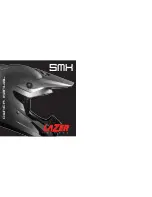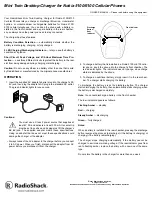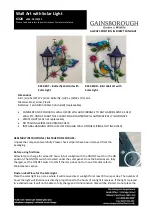
The adaptation of the NG / NG light series to the harness depends on the harness which is used. Always refer to the manual
of the used harness.
This is usually done at suitable attachment points in the shoulder area or in the main suspension of the harness.
The NG / NG light series has one attachment point via the bridle. The connection to the harness must be made with a
suitable connection device with a minimum strength of 2400 daN.
18.1. harnesses without integrated rescue system container:
If the harness does not have an integrated rescue system container use the frontcontainer which is shown at point 15.
The frontcontainer will be mounted by the Y-bridle in the main suspension of the harness. For a correct mounting on the
harness please refer to the harness manual.
18.2. Usage of an outercontainer / frontcontainer of an other manufacturer:
The usage of a frontcontainer or outercontainer from other manufacturers depend on the size and if the container is
certified. If the container is too small/big or not certified the rescue system isn´t airworthy anymore.
If a container of an other manufacturer is used you have to read the manual of the container.
For mounting the system to the harness please refer to the harness manual.
18.3. harnesses with integrated rescue container:
Almost all modern harnesses have an intergrated rescue container in which a rescue system can be placed. For the correct
mounting of the rescue system in such a container please refer to the harness manual.
18. 4. Harnesses with combined deployment bag/release handle
These parachute systems have been tested and found compliant using the original manufacturer's inner container. Use of
any other inner container may produce different results, including failures.
Several harnesses are equipped with a complete release handle/deployment bag system, which is adapted optimally to the
specific harness.
When using such a system ensure that the deployment bag is compatible to the rescue system used. Please consider:
1. The permitted volume range of the handle/deployment bag system must cover the volume of the rescue system. The
volume of the rescue system is to be found under 1. Technical datas.
2. In addition make sure that the deployment bag releases the rescue system without any problem.
A deployment bag, if is used within its specs, with 4 or more flaps (so called cloverleaf deployment bag) is, if LTF tested,
according LTF standart in general compatible. See LTF standart 4.3.2.
The use of a pocket container with an opening on only one side must be, according LTF standart 4.3.6, explicitly approved
by a LTF test centre for the specific rescue system used.
Mounting:
If the above conditions are met, the rescue system is to be packed by following No. 16 (Packing the parachute) step 1 to 19.
The remaining steps of stowing the rescue system in the harness specific deployment bag is shown in the manual of the
harness.
If the harness manual shows a so called stack-pack packing method, this is also possible! The afterward drawings are
showing the stack pack method only exemplary!
18. Mounting / integration to a harness
Cloverleaf container
Bridle
Lines
Lines hanks
Closure loop cloverleaf deployment bag
Canopy in S-folds
(stack pack)
Hem
Cloverleaf deployment bag
packing with lines bundles on the bottom of the container:
Cloverleaf deployment bag
packing with lines bundles on top of the canopy:
Lines
Bridle
Closure loop cloverleaf deployment bag
Lines hanks
Canopy in S-folds
(stack pack)
Hem
Bottom of container
Bottom of container
Attention:
If the parachute is mounted to a harness or a front/outer container you have to check the compatibility. This check is only
allowed to be done by therefore authorizied persons. The compatibility check have to be noticed in the “Repack and
inspection log book”.
Beside some other points you have to take care particularly that the connection length of the release handle to the
deployment bag is minimized. Therefore different loops are at the deployment bag where the release handle can be
attached. You should always try to use the shortest possible connection to ensure that the rescue parachute can be thrown
as good as possible. But you also have to take care that the release of the container is not blocked in any way. (take care that
the release pin does not block!!!). Read the manual of the harness in any way.
19. Specialities for paraglider´s winch towing
For winch towing you have to consider the instructions of the harness-, paraglider- and towing release manufacturer!
If you use a frontcontainer you have to ensure that the rescue parachute can be released in every situation.
20. Pre-flight check
In addition to a normal preflight check (see manual of the glider/harness or maybe towing device), you have to check before
every take off that the rescue container is closed correctly and the release handle is placed correctly.
If the rescue parachute connection bridle is removed after every flight (for example: when you use a frontcontainer) you also
have to check the correct attachment of the bridle!
Cloverleaf container
12
13

































